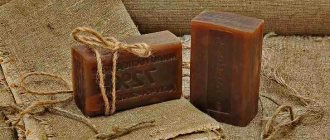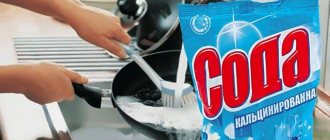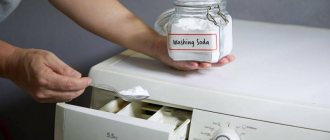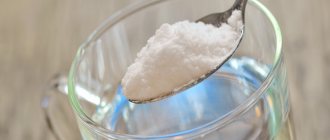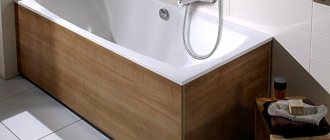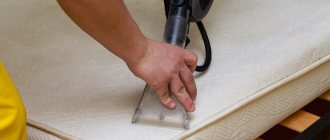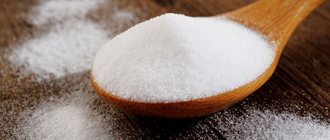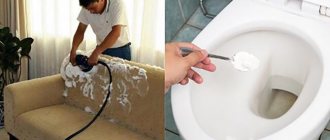The beneficial properties of soda have been known to people since ancient times. It was used everywhere: both in everyday life and in medical practice for the treatment and prevention of many diseases. The name comes from the Latin name of the plant Salsola soda, from which it was extracted.
The uses of baking soda and soda ash are very different. The first is softer, the second is a very strong alkali
In practical human activities, two main types of soda are used: baking soda or sodium bicarbonate and soda ash or sodium carbonate. Soda ash got its name due to the fact that for its synthesis it was necessary to calcinate the crystalline hydrate (heat to a high temperature).
Chemical composition
The difference in the properties of soda is due to the difference in chemical composition.
Sodium bicarbonate, also called baking soda, tea or drinking soda, sounds like NaHCO3 in the language of chemists. The acidity level of this compound is almost neutral, Ph is 8. Externally it is a fine white powder. This type of connection is absolutely safe for humans and working with it does not require the use of protective equipment.
Sodium carbonate, or soda ash, has the formula Na2CO3. The substance is highly alkaline, Ph is 11. There are two brands of this sodium salt of carbon dioxide. Brand A is in the form of granules, brand B is available in powder form. Both types of sodium carbonate have a strong irritant effect on the skin and mucous membranes. Interaction with them is possible only in personal protective equipment and rubber gloves.
Benefits and harms of sodium carbonate
Soda ash is a beneficial compound and here's why:
- has good disinfectant and cleaning properties;
- helps remove blockages from sewer pipes;
- approved for use for washing clothes, machine or hand;
- effectively removes scale from the internal surfaces of washing machines and dishes;
- can be used to soften hard water;
- Helps fertilize the soil and destroy garden pests.
Despite many advantages, baking soda also has disadvantages:
- at high concentrations in the air it can cause an explosion;
- may cause burns and skin irritation as it creates an aggressive alkaline environment.
Extraction methods
The main sources of sodium carbon dioxide salts are considered to be throne and nakholite. Deposits of these minerals are located throughout the world in more than sufficient quantities. One of the largest deposits of trona is located in the United States, and its reserves alone will last for two millennia. Soda ash extracted from the throne and nakholite is converted into food grade by calcination.
A chemical method for producing soda is also used. Sodium chloride is exposed to ammonia and carbon dioxide. As a result, sodium carbonate is formed. After calcination, bicarbonate or baking soda is obtained. This method was invented by the Belgian chemist Solvay, and it is named after him.
Both extraction options involve the production of sodium carbonate. And baking soda is produced from soda ash.
Recommended for you:
How does first aid apply for burns with drinking, soda ash and caustic soda?
Empirical formula
The chemical formula of baking soda is NaHCO3. It is an acid salt of carbonic acid. If you add up the atomic weights of all its constituent elements, you get the atomic mass of soda equal to 84 a. e.
The method of its formation is very simple. The chemical formula of baking soda is the complex interaction of sodium hydroxide with carbonic acid:
NaOH + H2CO3 = NaHCO3 + H2O.
In the field of chemistry, sodium bicarbonate is a complex of sodium cation and bicarbonate anion. When these elements are introduced into the body, they normalize the acid-base balance, neutralizing excess acids contained in the liquid medium.
Use in the food industry
It is difficult to imagine the modern food preparation industry without baking soda. Sodium bicarbonate is widely used as a leavening agent. This makes it indispensable in bakeries and confectionery shops. Any housewife knows how to use a pinch of soda to make a cake fluffy and filled with air bubbles.
Besides baking, bicarbonate is used in the following recipes:
- in marinade for meat and poultry;
- as part of omelettes;
- in vegetable salads and stews;
- in coffee and tea drinks;
- when making homemade cheese;
- in milk porridges.
The taste of the most famous childhood dishes is strongly associated with sodium bicarbonate.
Sodium carbonate, on the contrary, is used quite rarely in the food industry. Mainly in the form of preservative E500.
Cleaning properties
Using baking soda as a cleaning agent is a life hack that almost everyone knows. The substance gained such popularity due to the combination of high efficiency and gentle treatment of surfaces. Among the many options for using bicarbonate at home, there are several of the most popular.
- In combination with laundry soap, bicarbonate perfectly removes traces of soot and grease. When mixed with a small amount of water, a thick mass is obtained. It can easily wash the stove or dishes without causing damage to the surface.
- Dry powder is used as an absorbent substance when cleaning fur products. Light fur requires extremely delicate cleaning and does not tolerate excess water. Baking soda is sprinkled on the surface of the fur and after a short period of time it is shaken out or combed out. Dust and dirt are removed along with the powder.
- The disinfectant properties of bicarbonate are useful when cleaning the inner surface of leather shoes. In addition to cleanliness and freshness, this method will prevent the appearance of fungal diseases and unpleasant odors.
- A mixture of liquid laundry soap and bicarbonate will completely replace washing powder, including automatic washing powder. The resulting gel is highly soluble in water, is completely washed off and is an environmentally friendly product. It is considered hypoallergenic and suitable for washing children's clothes.
Expert opinion
Did you know that...
Soda ash is also often used as a cleaning agent. It copes with the most difficult dirt and stains. The substance should not be used on delicate fabrics and surfaces. There are many examples of purification using carbonate.
- Sodium carbonate quickly and thoroughly removes mineral deposits. This makes it an effective cleaner for plumbing fixtures and ceramic tiles. A mixture of powder and water in one to one proportions is applied to the surface using a sponge. After a few minutes, the remaining rust and limescale are washed off with water.
- The beneficial properties of the substance include reducing water hardness. Therefore, the product can replace expensive products for washing machines and dishwashers. Adding a small amount of powder at each cycle will remove existing deposits on the heating elements and prevent them from reappearing.
- Sodium carbonate can be used as a bleach on thick fabrics such as linen or cotton. Additionally, the substance removes various types of stains, including greasy ones. Soaking kitchen towels in a weak solution will leave them feeling fresh and clean.
- Sodium carbonate is used as a clog clearer. The product is highly alkaline and therefore effectively dissolves congealed grease in sewer pipes.
- This type of carbon dioxide salt is included in many paints. It can also remove paint stains from clothes and various surfaces. When combined with slaked lime, it is able to completely dissolve the old layer of pigment.
Expert opinion
We recommend!
Sodium carbonate is more caustic than bicarbonate. Both carbon dioxide salts have proven themselves well as cleaning agents. Food-grade works well with moderately complex stains and is suitable for any surface; calcined removes even stubborn stains, but is not used on materials that are not resistant to alkalis.
How to prepare the solution
Soda ash can be used to wash dishes, clean pipes, and get rid of faded stains on clothes. This universal product relieves the housewife of the need to keep a whole arsenal of household chemicals at home for various needs.
Before use, it is necessary to make a solution of soda ash of the required concentration. Additional components are often added to it - soap, washing powder, ammonia. It is important to remember that too much product can cause damage to things and surfaces. The ratio of water and powder, depending on different purposes and household needs, is presented in the table.
Table - Amount of soda ash for domestic purposes
| Target | Proportions (soda - water) |
| Handwash | – 3 tablespoons per 10-12 l |
| Automatic wash | – 3-5 tablespoons (depending on water hardness); – 200 g per 5 kg of white laundry |
| Water softening (for example, for pouring into an iron) | – 2-3 tablespoons per 10 l |
| Cleaning the drum and cuff of the washing machine from dirt and mold | – 6 tablespoons per 200 ml |
| Mopping floors | – 3 tablespoons per 5 l |
| Washing dishes | – 3 tablespoons per liter |
| Toilet disinfection | – 2-3 tablespoons of soda and soap shavings per 200 ml (makes a paste) |
| Cleaning tiles | – 2-3 tablespoons per liter |
The same dose of powder can act differently depending on the temperature. The hotter the water, the more active the substance. The powder dissolves poorly in cold water, forming flakes. Therefore, it is optimal to use warm or cool water at room temperature for mixing.
Use in various industries
Sodium carbonate is used in many enterprises and industries. It is most often found in the following areas:
- soap making;
- glass production;
- production of pulp, cardboard and paper;
- leather dressing;
- in the chemical industry.
Recommended for you:
The Truth About Soda with Anna Chapman: Selected Story Excerpt
Sodium bicarbonate plays an important role in the food industry. In addition to it, the substance is applicable in several directions:
- production of medicines;
- production of artificial leather;
- rubber production;
- in the chemical industry and metallurgy.
Both versions of sodium carbon dioxide salts are used in the manufacture of a wide variety of things and are included in many products.
Storing soda ash
Sodium carbonate is a friable powder without lumps. In special packaging it can be stored for up to 5 years. Once the container is opened, baking soda can be stored for up to 25 days.
Sodium carbonate actively absorbs moisture from the air. If the package in which it is contained is open, the compound loses its properties and gradually cakes.
After opening the package, it is better to store the soda in a glass container, tightly closing it with a plastic lid. The bank must definitely sign it.
Safety
Considering the high Ph of sodium carbonate, its use in everyday life should be carried out using safety precautions. The skin of your hands must be protected with rubber gloves. When the substance gets on the mucous membrane or open area of the skin, it causes severe burning, redness and itching.
When heated, the substance easily evaporates; you can avoid burns to the respiratory tract by wearing a respirator. It cannot be consumed as food; soda is technical.
Recommended for you:
New soda pack design: fact or fiction?
Bicarbonate has an almost neutral acidity level. This makes it safe for humans, including direct contact with skin. This product cleans so gently that it can be used as a whitening toothpaste.
